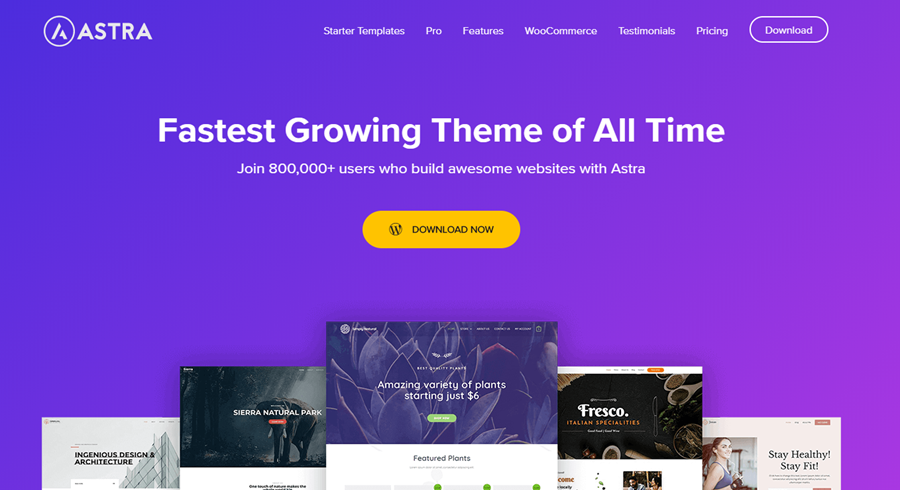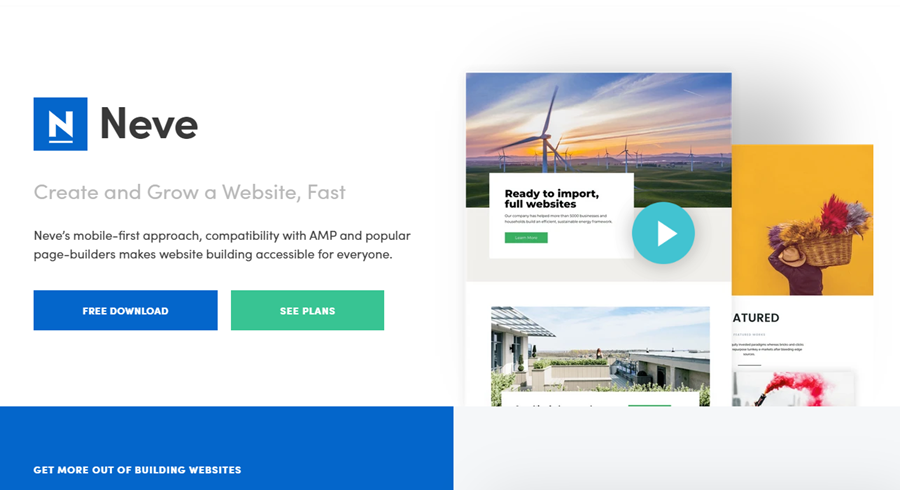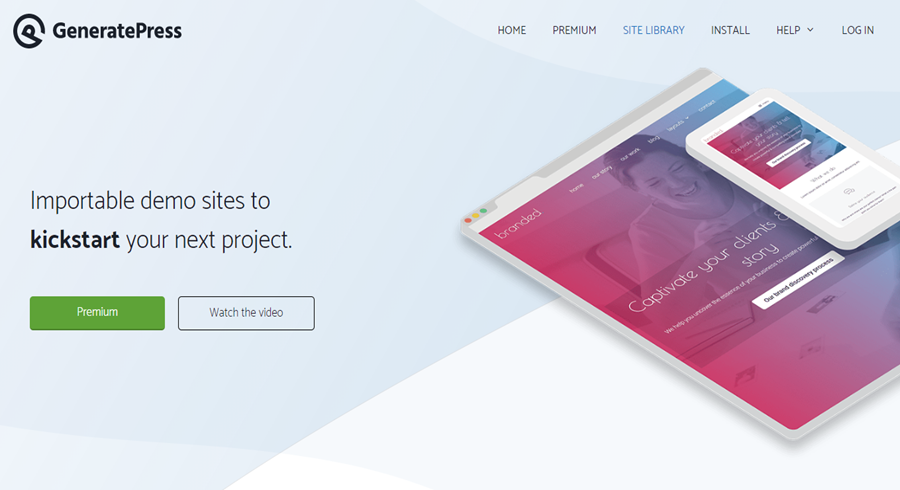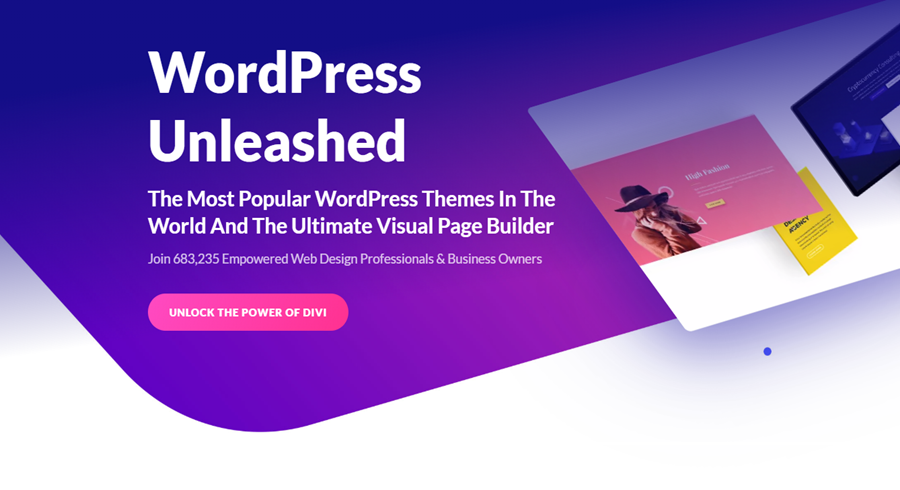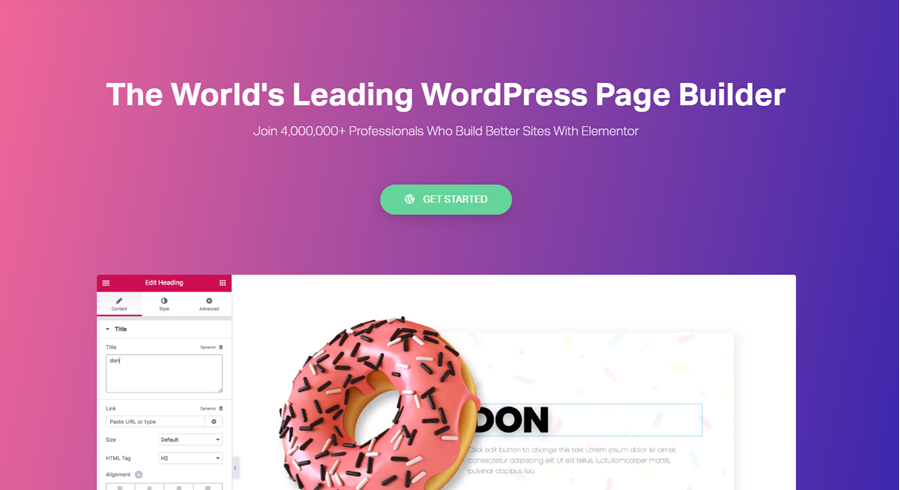We may earn money or products from the companies mentioned in this post.
As a blogger, you’re eager to get your message out to the world. You’ve probably been inspired by other blogs' designs and have a vision of how you want your blog to look.
Then, you look at your post and realize it doesn’t look at all like all those other popular blogs you’ve seen.
How in the world do people make their blog look good? Is it some kind of special design skill wizardry?
Thankfully, you don’t need any experience to create a great-looking blog.
Table of Contents
WordPress themes change the look of your site
This is an awesome feature of WordPress, because you can make your site look great without having to hire a designer or programmer.
It’s vital to pick a theme that will let you build your blog exactly how you want.
But how do you know what’s the best theme for your site?
You browse other people’s blogs and they all look great. Yet, no matter what you do, your blog just doesn’t look “good”.
Everyone else is able to make their site look great, so why can’t you?
Every blogger has been in exactly the same situation when they started out, including us.
Is it actually that hard to make an excellent looking site? Are you at the mercy of whatever the default theme looks like? Thankfully, the answer to these questions is no!
Most of the frustration in getting your WordPress blog looking the way you want boils down to the theme you use.
Some themes are easy to work with, and some are nearly impossible.
All themes are not created equal. It’s important to choose a theme that both looks good and is easy to use.
By easy I don’t mean the theme is only aimed at beginning bloggers.
Experienced bloggers also want a theme that’s easy to customize so they can focus on writing great content.
A good theme saves much time and frustration.
When we first started out, we would search endlessly for the perfect theme.
Then after spending $50+ dollars, we would spend weeks trying to make the theme look great like it did in the demo version.

Fortunately, it wasn’t long before we figured out how to make a great looking site by picking the best WordPress theme with the right features.
In this article we're going to show you exactly what a WordPress theme is and how to pick the best one for your blog.
You’ll learn what you should watch out for when buying a theme, and most importantly we’ll share the exact themes we use on our sites.
We have extensive experience with all the themes we recommend.
We use these themes specifically because they are easy to use and we can do all the design changes we want ourselves.
Neither of us are designers so you don’t have to have any special experience to be able to use these WordPress themes.
What is a WordPress Theme?
A WordPress theme is simply a template system installed on your blog that defines the appearance.
The theme controls things like color, menus, fonts, etc.
The neat thing about WordPress is that themes allow us to customize our site in an easy interface.
With the theme we can make changes to:
- Headers
- Sidebars
- Images
- Logo
- Author box
- Colors
And a whole lot more.
It’s important to understand that not all WordPress themes are the same.
Themes are developed by people who write code, so each theme has a different framework around it.
Most themes allow you to make the big changes like adding your logo, changing colors, changing fonts, and more.
Beyond that, every theme has a different way of accomplishing this. This is what makes some themes easier to use than others.
For example, a good theme will allow you to edit what you want quickly. You shouldn’t have to drill through different hidden menus to make changes.
A ‘bad’ theme can be clunky to use or at worst force you to write some actual code yourself.
This is the kind of thing we use themes to avoid in the first place!
Two important things we can tell you from our experience:
- Some themes look great but are very difficult to work with
- There is no perfect theme out there
Also, there’s something way more important than a good looking theme…
Everyone wants their blog to look good and you should too.
However, the #1 thing that will determine your success as a blogger is your content.
New bloggers often focus on all the fancy bells and whistles to make their blog stand out. This looks good, but creates other problems.
The more visual elements and fancy features on your blog, the harder it is for people to just simply read your content and that’s what they came for in the first place.
If you’ve read our other posts on blogging or gone through our blogging course, you know that content is the most important thing to a successful blog strategy.
You do want your blog to look good, but keep it simple. The most successful blogs that we run and know about have little ‘visual clutter’.
Keep this in mind and remember, you want readers to have the best experience on your site and read the information they want without any distractions.
If you follow this guide, you will save countless hours trying to hunt down and work your way through various themes.
Just a quick rundown on what you need before working with a WordPress theme:
You need to register a domain name, sign up for web hosting and install WordPress.
If you’ve done all that, you can jump in and start customizing your blog.
If you’re new to all of this don’t worry, we have a free guide on how to start your blog you can read through.
Why Free WordPress Themes Aren't the Best Choice
When you first install WordPress, the default theme is automatically installed and applied. This is a free theme that comes with WordPress and it's very basic.
There are countless free themes you can install, but you really get what you pay for.
The limitations you’ll run into with free themes are:
– Fewer customization options
– Fewer design choices
– Less or even sometimes no support from the theme creator
– Potential conflicts with any plug-ins you install
Any one of the above limitations can cost countless hours in lost productivity.
We started out with free WordPress themes, and they provided a basic site we could blog on. Free themes worked great until we tried to customize them.
We spent more time trying to fix errors or get support than we did actually writing blog posts.
As you can imagine, all this troubleshooting didn’t result in any additional income.
Time is money. Looking back, we could have spent $50 for a good theme and saved days (ok, maybe weeks!) trying to design our blog. If we used that time to write more posts, we would have been that much further along.
We know many of you will be on a budget when you start off, and that’s perfectly fine!
We only mention this about free themes so you know ahead of time.
There’s nothing worse than installing a free theme and expecting you’ll have all the customization options and features of a paid theme.
It won’t hurt anything to use a free theme, so don’t worry about that.
However, when you decide how you want your site to look, your best bet is to go with a premium theme.
We will give you a couple options for free themes that are great to get you started.
We’re sure there are other good free themes out there, but it’s so hit and miss you can save a lot of time using the themes we’ve tested.
One more thing to mention is that paid themes aren’t all good either! They can have just as many, or potentially more headaches than some free themes.
Why is this? It usually has to do with how the theme is coded.
Every programmer who builds a WordPress theme uses their own development methods.
Sometimes these translate into great themes that are easy to use, but often the result in slow, clunky themes that are difficult to achieve the look you want.
The takeaway is this: Free themes aren’t always bad and paid themes definitely aren’t always good.
The 7 Best WordPress Themes for Beginners in 2020
1. Astra
Astra is our favorite wWordpress theme, and one we consistently recommend. They even have a great free version to get you started.
Astra has a number of things going for it.
They have an extensive library of starter sites that you can import with one click to make your blog look good with minimal work.
The starter sides also include templates for any other type of website you might want to build like an e-commerce store, a fashion magazine or a fitness studio among others.
Astra is easy to navigate and makes changing elements on your blog a quick and painless process.
In one area you can manage the layout of your website, header, blog, posts, colors, sidebar, and more.
It typically only takes a couple clicks to change the element you want.
This is great because you don’t have to dig through lots of submenus or hidden areas of the theme to customize it.
The Astra theme is well coded and helps your blog load fast.
Why does that matter?
For one thing, your readers don’t want to wait around forever for your website to load.
How many times have you sat there waiting for a website to load and just close the window out of frustration?
Site loading speed is also somewhat of a ranking factor Google uses to determine your site ranking in the search engine results.
There are other things that affect site loading speed, but those can all be fixed and optimized.
There isn’t much you can do to speed up a poorly coded theme.
Astra also works great with page builders like Elementor.
Who the Astra blog theme is great for: Anyone from beginner to experience blogger who wants an easy to use, highly customizable, insatiable WordPress theme.
Who the Astra theme is not for: Astra is an incredibly capable theme without many downsides. Since there’s a free version, anyone who blogs should try it.
Astra has a free version that is more than capable enough to get you started. Some features are limited so if you want full control over your site upgrade to Astro Pro for the extra customization options it offers.
2. Ocean WP
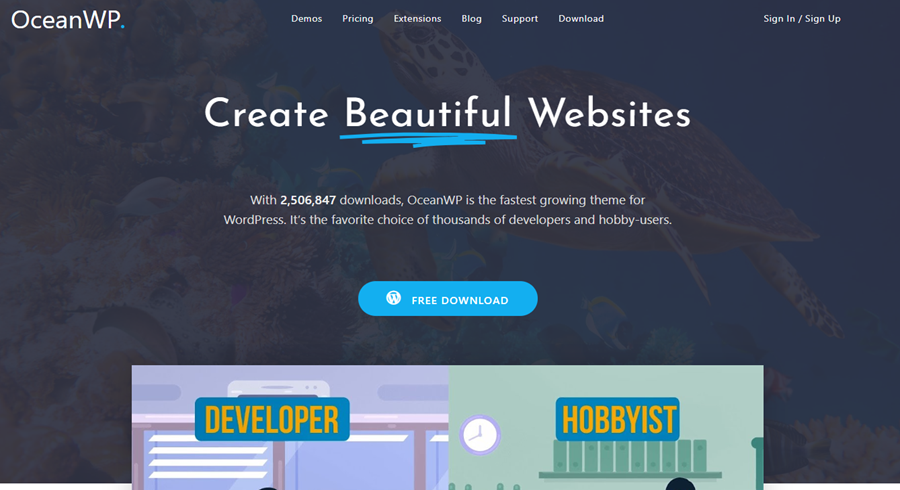
Ocean WP is an elegant and simple theme made specifically for bloggers or businesses that need a simple website.
We’ve used ocean WP on several sites, and the performance is great.
The Ocean WP WordPress theme is lightweight, which helps us create a quick loading blog.
Like other WordPress themes on this list, ocean, WP helps you build websites by importing demo sites in a single click. This is great if you just want to apply a template and be done with it.
The template selection in Ocean WP isn't quite as good as the Astra theme, but they seem to be adding new demos all the time.
Who Ocean WP is perfect for: Bloggers who want to get up and running fast with a simple and straightforward theme.
Who Ocean WP is not for: Bloggers who need full customization options. Ocean WP has have some, but they’re limited in comparison to other themes in this list.
3. Neve
Neve is a powerful, clean, and easy to use theme from Themeisle.
They offer a free version and a paid version with more customization options.
Neve shares many of the same features as Heista, but the main difference is that Neve takes a mobile first approach.
This means Neve is built to look and function great on mobile devices.
Does this mean that any other themes are not well optimized for mobile? Definitely not.
However, it can be difficult to find themes that look good on both desktop and mobile without a lot of tinkering and tweaking.
Having your site optimized for mobile traffic is essential in this day and age, since most people browse the Internet through their smartphone or tablet.
The other themes we included in this article all work great on mobile devices.
Another great theme from Themeisle is Hestia – a sleek, modern looking blog theme that's worth checking out. It shares many of the same features as Neve.
Neve comes with 80+ ready to import starter sites in a variety of niches.
Who the Neve theme is perfect for: Bloggers who specifically need a theme that works great on mobile devices.
Who the Neve WordPress theme is not for: Bloggers who need more starter templates, or different customization options.
4. GeneratePress
GeneratePress is a no-frills WordPress theme that’s lightweight and super fast loading.
Generate press is heavily focused on page speed and site loading time.
We previously mentioned speed is important for your readers' experience and helps with Google rankings.
GeneratePress is free, but it doesn’t offer a lot in the way of customization options. The free version is perfectly fine if what you want is a simple site that showcases your content.
If you need some extra customization options, they do offer a premium version.
The premium version gives you greater customization over colors, typography, menus, and access to in portable demo sites.
Who the GeneratePress theme is perfect for: Anyone who wants a simple site that focuses on fast loading time and simplicity.
Who the GeneratePress theme is not for: Anyone who needs a lot in the way of customization options.
The premium version of GeneratePress doesn’t offer the number of customization options you would find in the other themes listed here.
This isn’t necessarily a bad thing – what really matters is the content on your site, and GeneratePress might be a perfect fit for you.
5. Divi
Divi is a popular theme created by Elegant Themes.
Divi has a unique page builder where you can customize not only your site's layout, but you can also build almost any kind of specialized page you want.
Divi uses a visual editor where you change elements on your site without needing to touch any code.
The builder allows you to create unique layouts that would be difficult if not impossible to do in other themes without a page builder plug-in like Elementor.
You can save custom templates to reuse in other parts of your site.
Divi is popular, but there are a few drawbacks to using it. They aren’t deal breakers, just something to be aware of.
Divi can have issues with site speed and loading time compared to other themes in this article.
It’s not that the performance is terrible, but with people’s attention spans being so short today, you want a site to load as fast as humanly….err…computerly(?) possible.
The biggest drawback is what happens if you ever decide to move away from the Divi theme later on.
Divi has a unique page building system so if you switch to another theme down the road that theme won’t be able to display the pages you’ve built using Divi.
In other words, pages built with Divi need Divi in order to be displayed properly.
There are some ways around this, but in the sake of transparency it can be a giant headache if you were to switch themes in the future.
Who Divi is for: Bloggers who want a full suite of customization options.
Who Divi isn’t for: Bloggers who want a more straightforward theme framework, and value a fast loading blog.
6. Elementor
Elementor started out as a page builder, but you can also use it to build your entire site layout or theme.
Elementor is unique in this regard. Other page builders are focused on building single pages and not giving you control over your entire site’s appearance.
Elementor isn’t a theme in the traditional sense. You still need a theme installed to be able to use it, but almost any theme will do.
Elementor basically sits on top of that theme, which lets you change the look and feel of your theme all from Elementor’s interface.
This might sound confusing if you’re just starting out, but we promise it’s easier than it sounds.
You can use Elementor as your theme, or alongside your favorite theme. We often use the Astra theme and Elementor combo.
The folks at Elementor have a free theme called ‘Hello’, which is meant to be a simple theme you customize with Elementor.
7. Hello
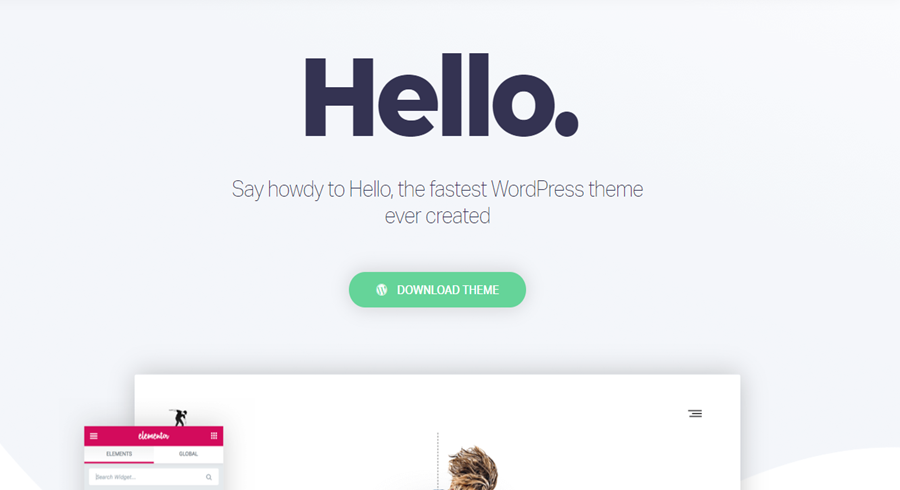
There is a slight learning curve with Elementor. It’s easy to use, but it might take a few days to get up to speed since it’s different from traditional themes.
Your time learning Elementor will be well spent. After learning how to use it, you’ll be able to create any type of blog or website you want.
Elementor has a free version, but you’ll want to get Elementor Pro for access to more widgets, templates, and elements.
There are also many third party plugins for Elementor that extend its library even more. You really can build almost anything you can imagine.
Another awesome feature of Elementor – you can create opt-in forms and even pop-up opt in forms for your site.
Usually you need a separate plugin to build opt-in forms or pop-up's. Elementor saves time and money here.
We’re big fans of Elementor and have it installed on every site we have.
Who Elementor is for: Anyone who wants complete control over the look and feel of their blog, plus anyone who needs to build specific pages you can’t achieve with a normal WordPress theme.
Who Elementor isn’t for: Someone who isn’t ready to do much customizing, and just needs a simple setup to get going.
Summary of Our Recommended WordPress Themes for Bloggers
What do we use?
Our all around choice is the Astra theme + Elementor page builder combo. You can install the free version of each, which might be all the customization you need at this point.
If you’re about to scream ‘I just want to write a blog post!’ – give Generate Press a try. With the exception of Divi, you can switch between the themes listed here without any issue.
Bonus Tip – Find Out What Theme any WordPress Blog is Using
Have you seen blogs you like, but can't figure out which theme they're using?
Thankfully, a few free tools exist to help you find the WordPress theme a site is using.
These free blog theme detection tools function the same way, but sometimes one tool will give you results when another one doesn't.
- WP Theme Detector – Simply input the blog's URL and wait for the results.
- Scan WP – This free tool functions the same way where you input a URL and wait for the magic to happen.
- Isitwp – Another theme detector that also checks for plugins being used and even the hosting company.
What if those tools still can't find the theme? In that case, the theme is more likely to be custom meaning someone hired a designer to create their own theme. If you're still dying to know what the theme is, you'll have to dig into the site's code which isn't as tough as it sounds.
Step 1. Visit the blog's URL
Step 2. If you're on Chrome or Firefox – right click and select ‘view page source' or even easier, just hit crtl + u on your keyboard.
Step 3. Search through the code/text until you see ‘wp-content/themes/theme-name'. That should show what theme the blog is using. You could also use the keyboard shortcut ‘ctrl+f' and search for ‘themes'.
If you liked this post, please let us know in the comments below. Have you had a chance to try these themes? Which is your favorite so far?


